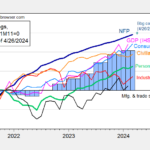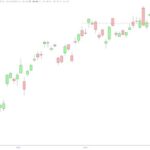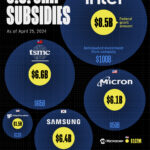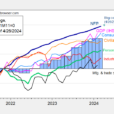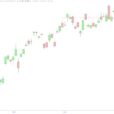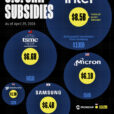
In their first (and preliminary) estimate of the US GDP for the fourth quarter of 2017, the Bureau of Economic Analysis (BEA) reported that the US economy was growing at a +2.54% annual rate, down -0.62% from the prior quarter.
This is a report of sharp contrasts. Although the headline number is down relative to the prior quarter, this report actually contains the strongest consumer spending growth (+2.58%) since the 2nd quarter of 2016. But offsetting that good news is the worst import contribution (-1.96%) since the 3rd quarter of 2010. And inventories flip-flopped from boosting the headline last quarter (+0.79%) to being a major drag on the headline this quarter (-0.67%). Fixed investment (at a +1.27% contribution), exports (adding +0.82% to headline) and government spending (contributing +0.50%) were also impressive. Netting all of this, the BEA’s “bottom line” for the quarter (their “Real Final Sales of Domestic Product”, which excludes inventories) improved substantially to +3.21%, up +0.84% from the prior quarter.
Casting a shadow on the good news from the consumer spending uptick is other data showing where the spending is actually coming from. Real annualized household disposable income shrank -$12 from the previous report to $39,213 (in 2009 dollars) — and the 3rd quarter number was revised sharply downward by -$47. The household savings rate plunged to 2.6%, which is lower than even the 2.7% recorded third quarter of 2007 — at the very precipice of the “Great Recession.”
For this revision, the BEA assumed an effective annualized deflator of 2.38%. During the same quarter (October 2017 through December 2017) the inflation recorded by the Bureau of Labor Statistics (BLS) in their CPI-U index was a similar but somewhat higher 2.61%. Underestimating inflation results in optimistic growth rates, and if the BEA’s “nominal” data was deflated using CPI-U inflation information the headline growth number would have been slightly lower at a +2.37% annualized growth rate.
Among the notable items in the report :
— The headline contribution from consumer expenditures for goods was reported to be substantially stronger at +1.76% (up +0.79% from the prior quarter).
— The contribution to the headline from consumer spending on services also improved materially, up +0.30% to +0.82%. The combined consumer contribution to the headline number was +2.58%, up a significant +1.09% from 3Q-2017.
— The headline contribution from commercial private fixed investments more than tripled to +1.27%, up +0.87% from the prior quarter.
— Inventories reversed their contribution to the headline number, subtracting -0.67% after adding +0.79% in the prior quarter (a swing of -1.46%). It is important to remember that the BEA’s inventory numbers are exceptionally noisy (and susceptible to significant distortions/anomalies caused by commodity price or currency swings) while ultimately representing a zero reverting (and long-term essentially zero-sum) series.
— Governmental spending added a surprising +0.50% to the headline number, the highest growth rate since the 2nd quarter of 2015.
— Exports contributed +0.82% to the headline number, up +0.57% from the prior quarter.
— Imports subtracted -1.96% from the headline number, a drop of over two percent (-2.07%) from the prior quarter. In aggregate, foreign trade subtracted -1.14% from the headline number.
— The “real final sales of domestic product” grew at an annualized 3.21%, up +0.84% from the prior quarter. This is the BEA’s “bottom line” measurement of the economy and it excludes the inventory data.
— As mentioned above, real per-capita annual disposable was down -$12 per annum from the previously reported 3rd quarter number. At the same time the household savings rate was reported to have dropped to 2.6% (down -0.7% from the prior quarter and down a full percent from 2Q-2017). As always, it is important to keep this line item in perspective: real per-capita annual disposable income is up only +6.91% in aggregate since the second quarter of 2008 — a meager annualized +0.71% growth rate over the past 38 quarters.




